
The monarch butterfly migration is quite simply one of the most jaw-dropping spectacles on Earth. While you may initially think that this insect migration event is one-dimensional (after all, it is just one species, right?), that couldn’t be further from the truth. Not only do the monarchs engage in a variety of fascinating behaviors, yielding hundreds if not thousands of show-stopping images, the alpine forest that the monarchs inhabit is stunning, as well. Combine the two and you get memories and photographs that will last a lifetime.
In Mexico, there is an entire cultural ecosystem built around the annual monarch migration. From the small mountain town of Angangueo, brimming with traditional Mexican charm, to the friendly locals you’ll meet along the way, there is so much to discover, appreciate and marvel at during a monarch butterfly migration expedition.
World Wildlife Fund, Natural Habitat Adventures’ partner in conservation travel, works to protect vital habitat in Mexico’s Monarch Butterfly Biosphere Reserve by countering illegal logging efforts, providing training for sustainable tourism, and supporting projects that provide income for local communities.
To highlight their ongoing efforts to save the monarch butterfly, we’re partnering with WWF to give you a chance to win a six-day adventure for two to see the monarch butterfly migration in Mexico!
In case you need further convincing, keep scrolling to see some of Nat Hab Director of Sustainability & Conservation Travel Court Whelan’s favorite photos of the monarch migration and learn more about the wonders you’ll encounter in Mexico on a monarch migration adventure.
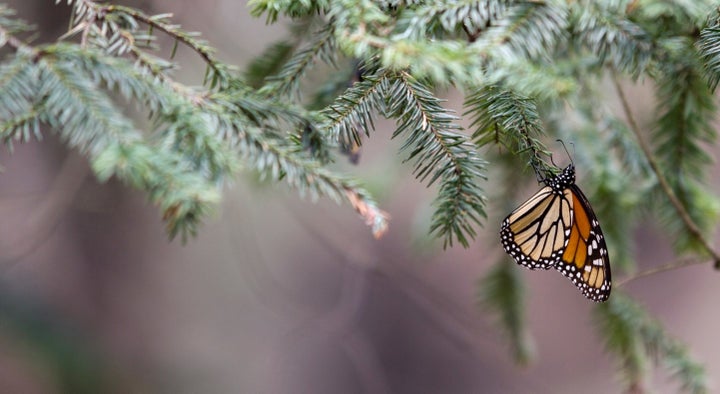
When surrounded by millions of monarchs, it’s often easy to forget that these are all individual organisms that each have their own small place in the world. They are not a colony in the traditional sense, as this term is often used to refer to social organisms like ants, bees and termites. Rather, each monarch butterfly has made this 2,000- to 3,000-mile journey on its own, having never been to Mexico’s central highlands in its life.
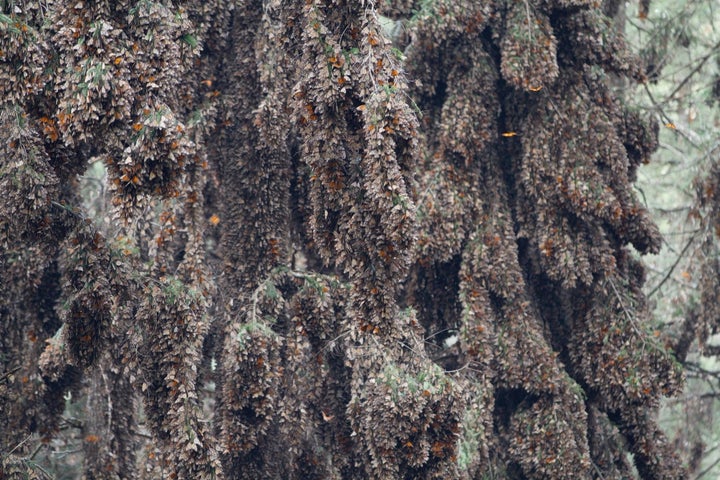
Like many animals, monarchs cluster together for protection from winter weather (even though it’s Mexico, it’s still winter!) and from avian and mammalian predators. Although monarchs are chemically defended due to the plants they eat as caterpillars, they still have several predators that can bypass their toxic defenses. Strength in numbers…very impressive numbers.
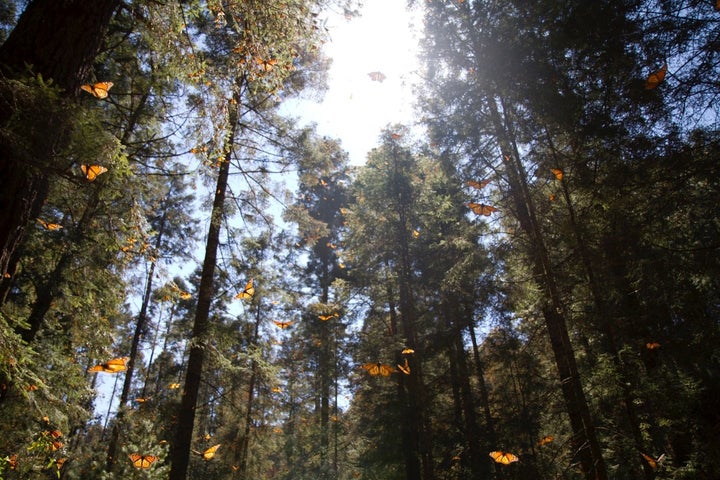
Equally impressive to their massive clustering behavior is their proclivity to take flight during warmer days. To witness monarchs flying in great numbers is no doubt one of the most breathtaking sights imaginable.

And when things really get going, the sky above you can light up with a moving spectacle of orange and black, and you can feel as though you are in a monarch snow globe.
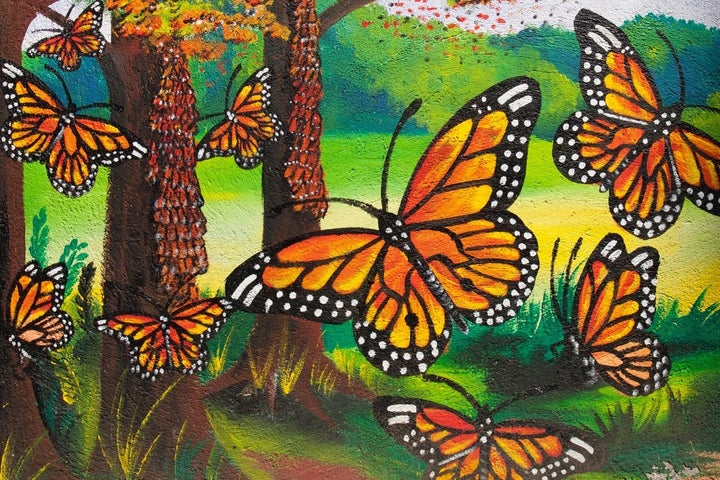
The local passion for the monarch butterflies is palpable. Murals that span entire buildings, depicting the migration in the traditionally-vibrant colors of Mexico, can be seen throughout the region.
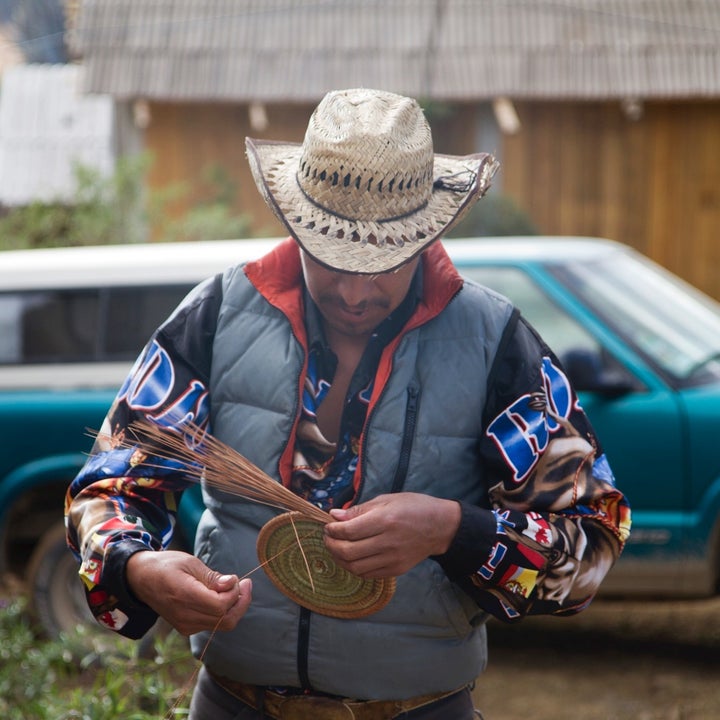
A local Mexican man begins work on a pine needle basket at the entrance of one of the monarch reserves, weaving each needle into a piece of art. © Court Whelan
In the charming town of Angangueo, what once was a focus on mining and forestry has turned into a fascination with the monarch migration and all that it brings to the town. Ecotourism provides a variety of income opportunities for local people, who then become stakeholders and advocates for monarch conservation.
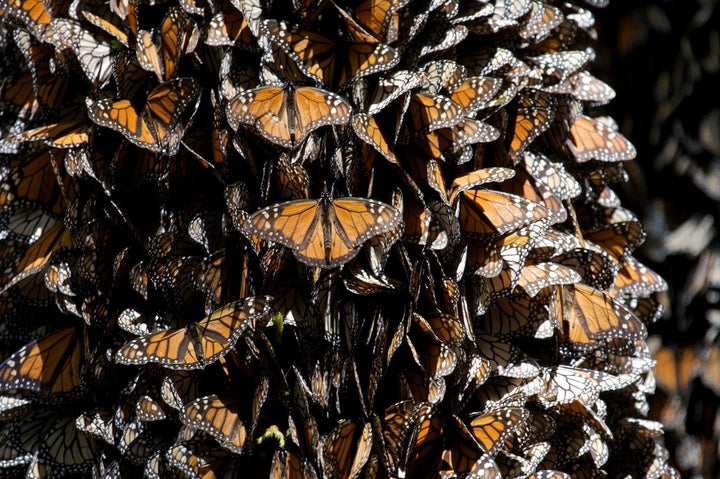
As the migration season continues, monarchs descend to lower elevations, seeking the moisture of small springs and stream beds. By the end of March, the butterflies will leave their overwintering home and begin the long journey back to the U.S. and Canada.

An ecotourist admires a single monarch. © Court Whelan
To many, the monarch butterfly is highly symbolic. To some, they signify rebirth, due to their metamorphosis from caterpillars to adults. To others, they symbolize the delicate beauty of life. Through many years of guiding monarch expeditions, Natural Habitat Adventures Expedition Leader Court Whelan has found that each person has their own special significance associated with this most royal creature.
This collection of photos is just a sample of the natural wonders that await you on a monarch butterfly migration tour. Whether this is something that you’ve been dreaming of for years, or only since reading this article, we highly encourage you to make time to see this natural spectacle for yourself. It sounds cliché, but it truly is a life-changing experience. You could say that a journey to the monarchs’ winter home could cause you to undergo a metamorphosis of your own.
Want to see the butterfly migration for yourself? Enter WWF’s Monarch Butterfly Adventure Giveaway today!
